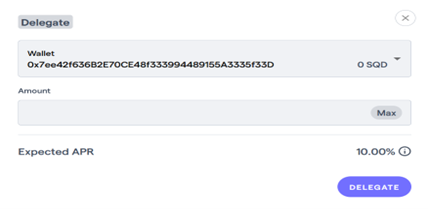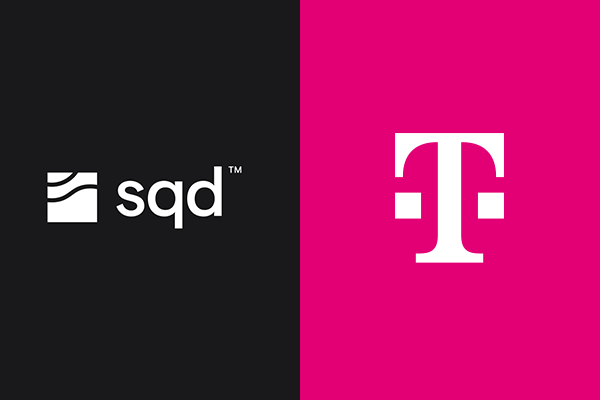SQD (formerly known as Subsquid) provides companies with a valuable resource for storing unformatted raw data and a powerful query engine, enabling Web3 developers to access blockchain data rapidly and seamlessly.
| Token | SQD |
| Foundation | 2021 |
| Ecosystem | Arthera, Pancakeswap, Kelp |
Problem
In today’s increasingly fragmented landscape of diverse blockchains, developers aiming to reach a broad user base must depend on systems that are compatible across various platforms. This fragmentation poses significant challenges when retrieving crucial data for decentralized applications (dApps), such as transaction histories. Traditionally, developers have had to manage their own nodes or depend on centralized interfaces (APIs) to obtain the necessary data in a suitable format. This traditional approach, however, is fraught with issues including long waiting times, high operational costs, and potential security risks.
Solution
SQD addresses and eliminates these problems by offering a fundamentally decentralized network for retrieving historical blockchain data. This innovative protocol allows developers to bypass the inefficiencies and risks associated with traditional methods. With SQD, developers experience maximum flexibility in both formatting and utilizing the data, ensuring that they can efficiently and securely build and maintain their dApps without the overhead and risks of traditional data retrieval methods. This not only streamlines the development process but also enhances the overall efficiency and security of blockchain-based applications.
Step by Step Staking Guide
Disclaimer: This guide is a technical guide to a possible approach to the staking process and is not financial investment advice. Telekom MMS is not liable for any losses that may occur as a result of staking via the SQD network or any other staking process.
To stake SQD you will need to have Ethereum compatible wallet. This guide explains how to stake using the MetaMask wallet.
1. Setup and Connect Wallet
- Download & Install Wallet: Use a compatible wallet like MetaMask, Rainbow or others.
- Create or Import Account: Follow the wallet instructions to create or import an existing account.
- Fund Wallet: Ensure your wallet has sufficient SQD and some additional funds for transaction fees.
2. Access SQD Network
- Visit SQD App: Navigate to the https://network.subsquid.io.
- Connect Wallet: Click on “Connect Wallet” and select your wallet.
- Make sure that you’re wallet is connected to Arbitrum network.
- Authorize Connection: Authorize the connection in your wallet app.
3. Choose Worker Node
- Select Worker: Browse the list of available workers.

- Evaluate Workers: Consider factors like performance, commission rates, and reliability.
- Check out our Nodes here: SQD Network App.
4. Delegation Process
- Enter Stake Amount: Input the amount of SQD you wish to stake.
- Delegate Tokens: Click the “Delegate” button.

- Confirm Transaction: Review and confirm the transaction details in your wallet. Ensure you leave some balance for future transaction fees.
5. Manage Your Stake
- Monitor Staking: Track the performance and rewards from your staking in the SQD app.
- Adjust Stakes: You can increase or decrease your staked amount or change validators if needed.
- Claim Rewards: Periodically claim your staking rewards through the app.
6. Unstaking
- Initiate Undelegation: If you decide to unstake your SQD, initiate the process in the SQD app.
- Wait for Unbonding Period: Be aware of the unbonding period during which your tokens are not earning rewards and are not transferable.
- Receive Tokens: After the unbonding period, your tokens will be available in your wallet.
Further Information
>Deutsche Telekom joins Subsquid decentralized network
>How does the blockchain of the future look like?
>Deutsche Telekom’s reliable staking service

Guest Author: Jonathan Beyer, Working Student at Web3 Infrastructe & Solutions | Telekom MMS
Jonathan Beyer is a working student at the Web3 Infrastructure & Solutions of Telekom MMS and supports the Telekom Staking team with research and analysis around the topic of Staking.

Maximilian Beyer, Product Owner | Telekom MMS
Maximilian Beyer is a product owner at the Web3 Infrastructure & Solutions of Telekom MMS. There, he and his team are responsible for building staking infrastructure for public blockchain networks. Before this, Maximilian gained many years of consulting experience in strategy and digitization projects, which he also uses today in projects in the area of blockchain and web3.
More about Blockchain

Ob Digitalisierungsexpert*in, Werkstudent*in oder Schülerpraktikant*in – Hier berichten unsere Gastautoren aus ihrem Alltag.









